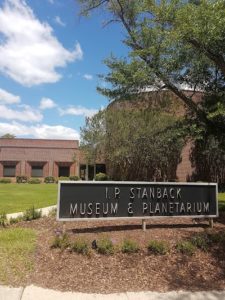The I.P. Stanback Museum & Planetarium, established in 1980 on the campus of South Carolina State University, is a unique facility among historically black colleges and universities, based upon the fact of its combination of an art museum, centered upon engagement with the humanities through diverse forms of cultural expression, combined with a planetarium, focused upon the study of the cosmos, our planet (the Earth), and the physical, chemical, and biological sciences, all in a single facility. This unique integration of the arts and sciences situates South Carolina State University in an excellent position to become an important national model as a contributor to the integration of the diverse humanities with science programs and curricula, creating a significant cultural conversation pertaining to new directions for how the humanities and sciences may interface in order to enhance the quality of life for local, regional, national and global citizens and communities.
 The concept for a museum and planetarium on the campus of South Carolina State University originated in the early 1970’s. The first exhibition space was the Whittaker Gallery located in the basement of the college library. The Museum’s present building was constructed in 1980 and is named for the first African-American chairman of the University’s Board of Trustees, Isreal Pinkney Stanback, a prominent businessman and philanthropist from Columbia, SC. Stanback served what was then South Carolina State College from 1966-1982.
The concept for a museum and planetarium on the campus of South Carolina State University originated in the early 1970’s. The first exhibition space was the Whittaker Gallery located in the basement of the college library. The Museum’s present building was constructed in 1980 and is named for the first African-American chairman of the University’s Board of Trustees, Isreal Pinkney Stanback, a prominent businessman and philanthropist from Columbia, SC. Stanback served what was then South Carolina State College from 1966-1982.
I.P. Stanback Museum and Planetarium is an embodiment of South Carolina State University’s commitment to community service, enhancing the appreciation of both the Arts and Sciences in a single facility. The Museum’s programs include aesthetic appreciation, historical and didactic information, scientific and technological presentations and encouraging the development of critical thinking and creative skills for its student and adult constituencies.
